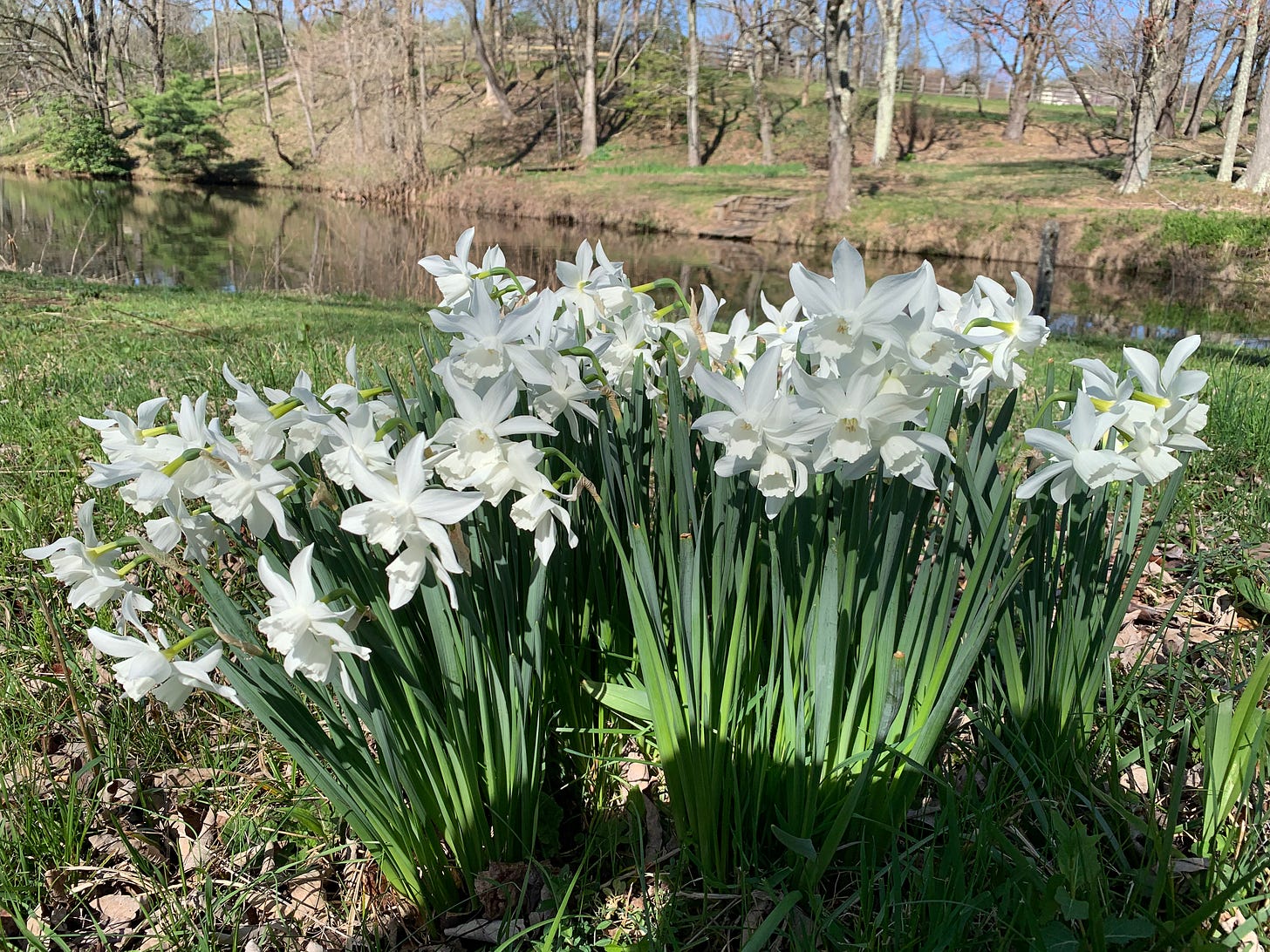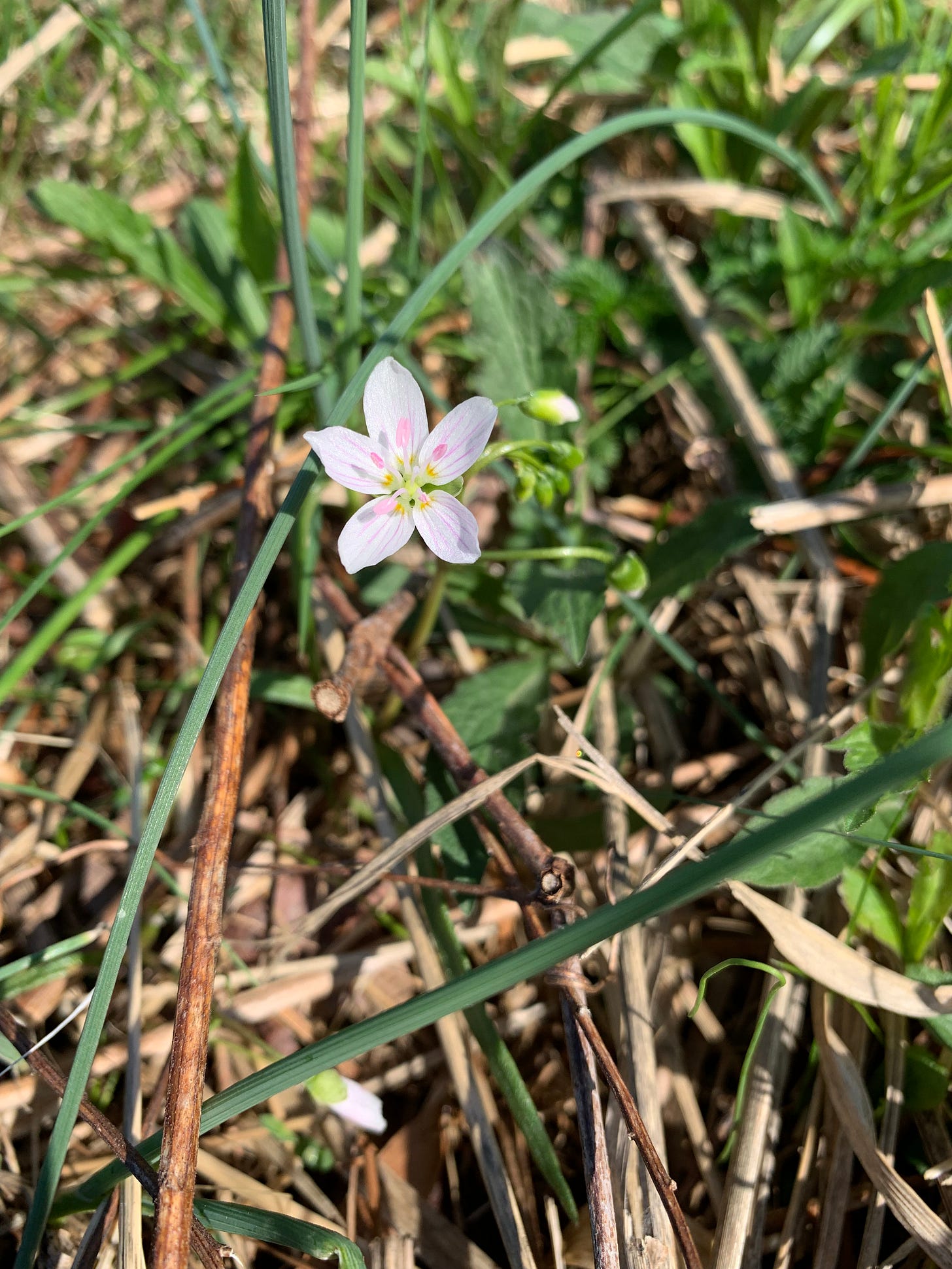My experience with environmental stewardship began when we were living in Bedford Hills, New York, in Westchester County back in the nineties.
At the beginning of that decade, we bought our first property outside the city: ten acres of lawn, fields and woods; an old falling-down dairy barn; another small barn that had been converted to a cottage; and a set of sugar maple trees that put on a spectacularly fiery fall show that I miss to this day. (Here in the Brandywine Valley, sugar maples are at the southernmost end of their eastern range, and they’re further stressed by climate change.)
The property’s most salient feature was a half-acre pond teeming with wildlife, from visiting kingfishers to resident bluegills to fat bullfrogs to leeches. Yes, leeches! Dogs wading into the pond muck sometimes emerged with free-riders attached. The dogs would be blissfully oblivious, which I suppose is how leeches succeed in life.
Our house sat maybe 40 yards away from the pond, up a small rise, the enclosed second-story porch affording an unobstructed view of the water. While I commuted to New York at the time, on weekends my wife, Pam, and I spent countless hours peering over books or newspapers or our dinner plates at a perpetual show. We’d watch whitetail deer and red foxes come down to drink, and see signs (such as tracks in the snow or the muddy shore) of nocturnal visits from raccoons and possums. On spring and summer evenings, the peepers and bullfrogs serenaded us. On warm summer days, dragonflies flitted about. Songbirds rested in nearby trees.
It wasn’t long before I began to view this pond not as a possession of ours but as a sacred responsibility. During this period of my life, I also began volunteering for The Nature Conservancy (which had been founded in 1951 to preserve Mianus River Gorge, just six miles away), and I would eventually go on to serve on the local chapter board. TNC’s many properties were managed by stewards, and while as a non-profit their legal responsibilities differed from mine as a private landowner, the thoughtfulness with which they approached management of these properties made a great impression on me.
Still, my efforts those days, I have to admit, were a hodgepodge. Sometimes we planted native species and other times we introduced plants that randomly appealed to us.
When we arrived, multiflora rose and bittersweet vines hung on the old crabapple tree beside the pond like an octopus engulfing its prey. These invasive vines were so old themselves that I couldn’t begin to get the blades of loppers around their trunks. I bought my first chainsaw, severed them at the base, let them dry out over the course of a winter, and dragged them from the tree with great effort over many weeks, trudging into the house at the end of more than one Saturday with my face bloodied by vengeful thorns.
Most efforts I did not undertake alone. John Naylor and his wife, Molly, a couple not much older than ourselves, occupied the cottage. In exchange for reduced rent, John, who owned and managed a restaurant in nearby Mt. Kisco, mowed the lawn and helped with outdoor chores. I’m sure he came to hate me. He was essentially hustling two jobs—one with ungodly hours—and I’d roll in from my own gig in the city and ride his ass about why the lawn wasn’t mowed. Eventually, his restaurant closed and he moved to Portland, Maine, where he found success with what became a chain of his own locavore grocery stores, Rosemont Market & Bakery, that thrive to this day.
We were once digging a hole to plant a tree—or, quite possibly, John was digging and I was watching—and John said, “You’re a wealthy man when it comes to rocks.” Truth. I learned to dig a proper hole on that property, and you couldn’t put a spade in the ground without hitting something impenetrable.
Similarly, I learned over time that you couldn’t do anything that didn’t have some consequence for the wild things. Our land, like most properties proximate to houses, was a manmade landscape. The colonists had clearcut virgin forest to make meadows for their cattle. The pond had been created from a wetland. Many of the old cherished trees had been placed by hand. The beautiful and ebullient red foxes had been introduced by sportsmen eager to emulate English hunts.
Through all of these insults and a thousand more, native life persists, but not always easily or without suffering, and not necessarily indefinitely.
At that home in Bedford Hills, where we lived for ten years, I once tried to intervene when I spotted a crow attempting to peck a bullfrog to death. The frog had gotten caught out in the middle of the lawn. The lawn that John mowed at my direction. The lawn that, truth be told, has no place in nature.
In his poem “The Third Hour of the Night,” Frank Bidart writes, “All life exists at the expense of other life.” I used this and its accompanying line (“Because you have eaten and eat as eat you must”) as one of the epigrams for my horror novel, The Prisoner of Hell Gate, written under the pen name Dana I. Wolff.
Yes, we all must eat. Yes, all life exists at the expense of other life. We can make that observation with a shrug or we can take it to heart and accept some responsibility for the consequences we wreak on other living things.
I don’t know whether the bullfrog survived after I chased the crow away, but I have come to choose the latter. That’s stewardship.
Alas, we have no digital pictures from those days in Bedford Hills. Enjoy these glimpses of spring from Puddock Hill. Virginia bluebells (Mertensia virginica) just beginning to open:
A clump of white daffodils (not native) down by the big pond:
Virginia spring beauty (Claytonia virginica) by the barn path:






Always interesting. Always informative. Thank you, Joel.